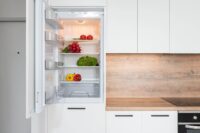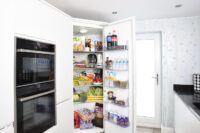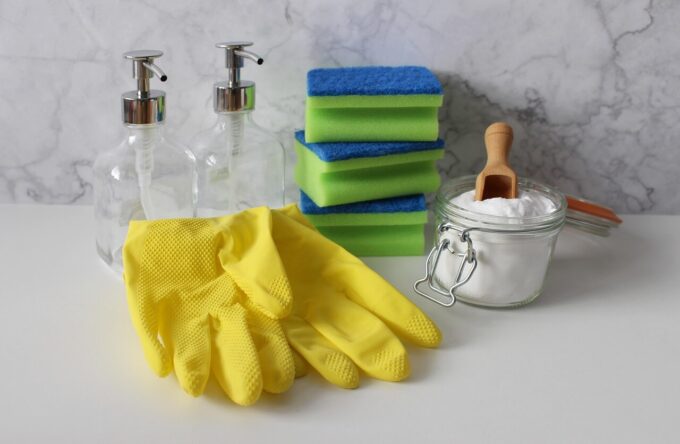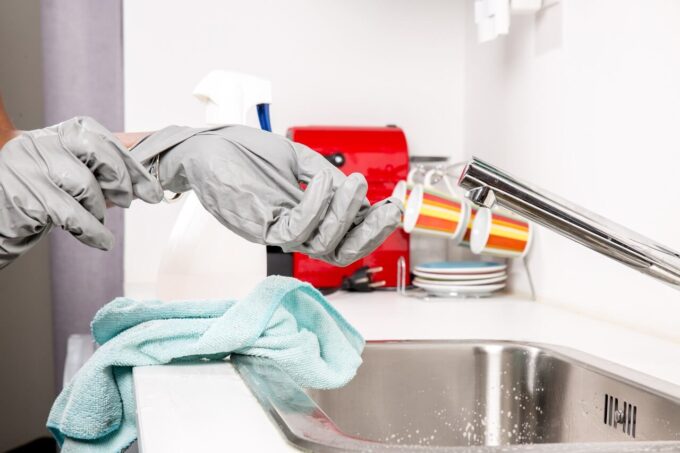
Even the most diligently cleaned bathroom can appear neglected when plagued by those characteristic whitish, chalky residues on glass panels, fixtures, and tiled surfaces. These persistent marks stem from mineral accumulations – predominantly calcium and magnesium compounds – that remain after water evaporation. When neglected, these deposits become increasingly resistant to removal and may eventually compromise surface integrity.
Fortunately, restoring brilliance to affected bathroom elements doesn’t require aggressive chemical solutions. Strategic cleaning approaches and regular maintenance can effectively eliminate these mineral traces and prevent their recurrence.
Understanding Mineral Residue Formation and Effective Removal Strategies
Bathrooms exposed to mineral-rich water develop distinctive cloudy patches and crusty formations when water molecules evaporate, leaving dissolved minerals behind on surfaces.
Standard bathroom maintenance – simple wiping or conventional cleaners – typically proves ineffective because these mineral compounds form strong bonds with surfaces. Successful removal requires compounds that chemically break down these stubborn deposits.
Three primary approaches yield successful results:
- Household acids like vinegar or citrus juices that chemically dissolve mineral accumulations
- Mild abrasive substances such as baking soda that physically dislodge deposits without surface damage
- Specialized commercial products formulated specifically for mineral scale elimination

Kitchen Cabinet Solutions: Vinegar, Lemon Extract, and Sodium Bicarbonate
Effective mineral deposit removal doesn’t necessitate specialized cleaning products – common pantry items often deliver exceptional results.
Distilled White Vinegar: Nature’s Mineral Solvent
Vinegar contains acetic acid that effectively dissolves calcium formations while remaining gentle on most surfaces.
Application method:
- Transfer undiluted white vinegar to a spray applicator and thoroughly coat affected zones
- Allow 10-15 minutes minimum contact time
- Scrub using a non-abrasive cleaning tool, then rinse with warm water
- For hardware, immerse a cloth in vinegar, wrap around the fixture, and leave for half an hour before scrubbing
Fresh Citrus Power for Brilliance Restoration
Citrus juice functions similarly to vinegar but imparts a natural fragrance. It particularly excels on glass and polished metal surfaces.
Application method:
- Apply fresh lemon directly to stained surfaces
- Allow 5-10 minutes processing time before rinsing
- For resistant deposits, create a cleaning compound by combining lemon juice with sodium bicarbonate
Sodium Bicarbonate: Gentle Physical Removal
Baking soda provides mechanical cleaning action without surface scratching, particularly effective when paired with acidic components.
Application method:
- Create a spreadable mixture by combining baking soda with minimal water
- Apply directly to stained regions and gently work with a soft cleaning tool
- For enhanced effectiveness, apply vinegar over the baking soda application and allow the resulting reaction before scrubbing
Insider technique: The vinegar-baking soda combination creates a powerful cleaning reaction – prepare for vigorous bubbling!

Proactive Approaches to Prevent Future Mineral Accumulation
While remediation is important, prevention strategies save considerable time and effort:
Consistent Surface Maintenance
Mineral deposits become increasingly resistant with time. After each shower, remove moisture using a squeegee or microfiber cloth to minimize mineral accumulation opportunities.
Water Treatment Systems
For persistent mineral issues, consider installing water conditioning equipment to reduce overall mineral content at the source.
Surface Protection Applications
Apply automotive wax or specialized water-repellent products to shower enclosures and tile. This creates a molecular barrier preventing mineral adhesion and simplifying maintenance.
Homemade Prevention Solution
Create a simple spray using equal proportions of white vinegar and water. Apply lightly to vulnerable surfaces every few days to neutralize mineral deposits before they establish.
Surface-Specific Treatment Approaches
Different bathroom materials require tailored cleaning approaches:
Glass Enclosures
- Apply vinegar or lemon solutions for spot removal
- Maintain clarity by using a squeegee after each use
Metal Hardware
- Apply vinegar-soaked cloth compresses for 30 minutes before cleaning
- Enhance luster with microfiber polishing
Ceramic Surfaces and Grout Lines
- Apply sodium bicarbonate with a soft brush to extract embedded residue
- Apply grout sealant to create a protective barrier against future infiltration
Efficient Cleaning Shortcuts
When time constraints prevent thorough cleaning:
- Used fabric softener sheets effectively eliminate water spots with minimal effort
- Keep diluted vinegar accessible for immediate post-shower application
- Melamine foam cleaners provide immediate spot treatment for persistent marks
With these targeted approaches and consistent application, mineral deposits become a manageable bathroom maintenance issue rather than a persistent problem. By employing household ingredients and establishing regular preventive practices, maintaining pristine bathroom surfaces becomes remarkably straightforward.
Latest Posts
How to Clean Your Walls Without Damaging the Paint
Reality check—walls accumulate debris over time. From oily handprints around switch plates...
3 Mins readHow to Deep Clean Your Kitchen in One Afternoon
Face it—thoroughly scrubbing your kitchen rarely tops anyone’s list of enjoyable activities....
3 Mins readHow Often Should You Really Be Cleaning These 10 Things?
(Unexpected insights for a healthier home environment) Most households maintain some form...
3 Mins readHow to Attract Pollinators to Your Backyard Garden
Dreaming of a vibrant, flourishing garden space? Whether you’re cultivating vegetables, nurturing...
3 Mins read











